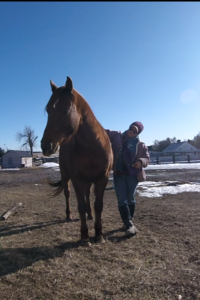Differences
When it comes to working with horses we all have our own personal, and strong, opinions on how it needs to be done. We are seldom shy about expressing them. Telling other people what they are doing wrong and how they should be doing things is a favorite pastime of horse people.
The problem with this is that we have no idea about the other persons ideas, goals, or story when it comes to horses. Before offering help, or worse telling someone what to do, what will work, what wont, we need to stop and remember that we only have experience with our own lives, that’s all we know. Of course we assume that that is what there is to experience and how everyone experiences life. It isn’t until we grow those gathered experiences and expand upon them that we begin to see that there is a whole other world out there, that everyone experiences life differently and responds differently to those experiences that we realize how much there is that we don’t know.
Just because one thing doesn’t work for us doesn’t mean that it doesn’t work for everyone. Just because we are able to do something one way doesn’t mean that everyone can. We all have our own separate roads to follow. That means that we can’t force others to follow our path or even that they should.
I train using positive reinforcement. Obviously I think its the best way to go. That doesn’t mean other ways don’t also work and make a happy well trained horse when used well.
There are so many different ways to train within the realms of positive reinforcement even. I use pressure and release, it’s a great tool in the positive reinforcement tool box. There’s no need to use escalating force, no need to make it aversive to the horse. Pressure and release is a way to offer guidance and give clear signals to avoid stressing the horse as he tries to figure out what we want. It can be the equivalent of being lead by your partner in a dance or holding hands with a loved one as they walk with you down the street. A kind, gentle guidance.
Some people aren’t able to use it well. That is just fine. They don’t need to use that tool if it doesn’t work for them. Nobody should use a training method they aren’t capable of using well. That doesn’t mean the training method is bad, it means the training method doesn’t suit that one person using it.
As we travel this path with our horses, and with the other people traveling the what appears to be the same path with us, we need to remember that even though our roads look the same we all travel them differently. The way that is right for one may not be right for the other.
The important thing, the way to decide if a method is working well, is whether or not the horse is happy. He is after all the one whose opinion matters here.
